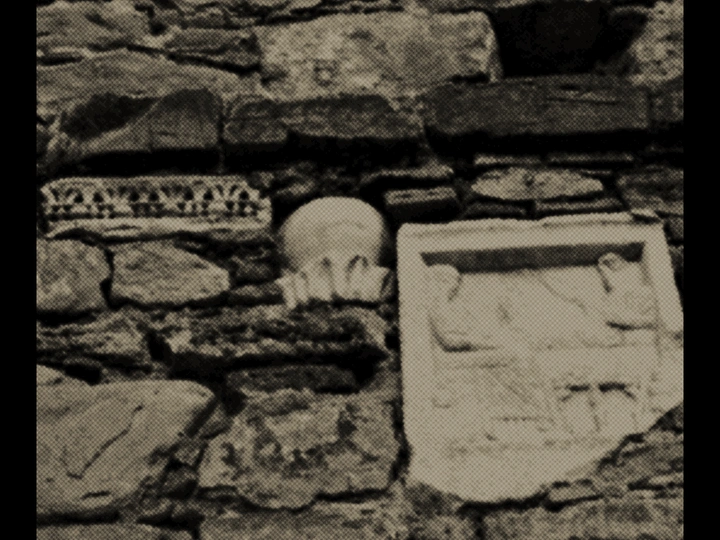Material Palimpsest

esque :
esque explores the possibilities of architectural practice.
esque blends fabrication, design, and the culture of representation with architecture.
esque collaborates with artists, designers and architects.
esque undertakes renovation projects, organizes workshops, and creates speculative projects and furniture.
esque intersects with the perspectives of other spatial designers.
esque questions the tools of related disciplines
Arnaud Naômé :
I am a practicing architect, lecturer, and researcher at the Université Catholique de Louvain and the Université Libre de Bruxelles. My research focuses on reuse practices in Belgium. I also founded a collective of architects engaged in both teaching and research. Together, we develop self-initiated projects, lead pedagogical workshops, and contribute to architectural culture through various events in Belgium.
We curated the Festival of Architecture of the Brussels Region, Archiweek. For this event, we selected recent projects, organized visits and workshops, hosted lectures, and created an exhibition. The common thread of the program was a special focus on the materiality of the featured projects.
Over the past few years, we have led several university workshops where we invited architects, designers, and artists to present their approaches to students. These workshops allowed students to develop more autonomous projects compared to the standard studio format.
Most recently, we were selected for an architectural residency co-created by the Flemish Architecture Institute (VAI), the Centre for Architecture (CIVA), the Institute for Contemporary Art (ICA), and the magazine A+. For this residency, we explored the relationship between ornament and the modernist style of the building where the program took place.
The architecture sector continues to struggle to shift toward less extractive material sourcing. Although reuse firms are gradually taking root in various contexts, they face persistent obstacles, such as the availability of storage space. Storage is limited, and uncertainty around whether a salvaged material will find timely reuse often deters stakeholders from stockpiling it. This hesitation, in turn, restricts reuse at scale. Each material demands specific storage conditions. Some are fragile and require shelter, while others, like stone, concrete, and inert mineral matter, can endure outdoor exposure with little to no degradation. These materials are common in deconstruction and, if systematically gathered, can lead to moments of surplus on the market.The project proposes to rethink the notion of reuse storage space, reframing surplus as an opportunity to activate residual urban or semi-rural plots as inhabited storage grounds with a public function. These spaces would store surplus materials over time and display them in ways that reintegrate reuse into daily life and collective imagination.Inspired by the historical practice of spolia, these materials would be assembled into follies dispersed across a park-like setting. Dry-stacked or mechanically bound, the structures could expand or shrink depending on the material flow. Arranged in compact rows to allow access for loaders, they act as both visible storage and sculptural elements.The ground would remain mostly untouched or be restored, allowing natural vegetation to grow. Cracks and cavities in the stonework would support biodiversity by creating habitats for insects, birds, and small mammals. This material park would buffer surplus elements from the deconstruction sector, while also offering accessible outdoor space for communities. The project can lead to various outcomes, built or unbuilt. The goal is to foster interaction between communities and reuse environments to support and expand this practice.